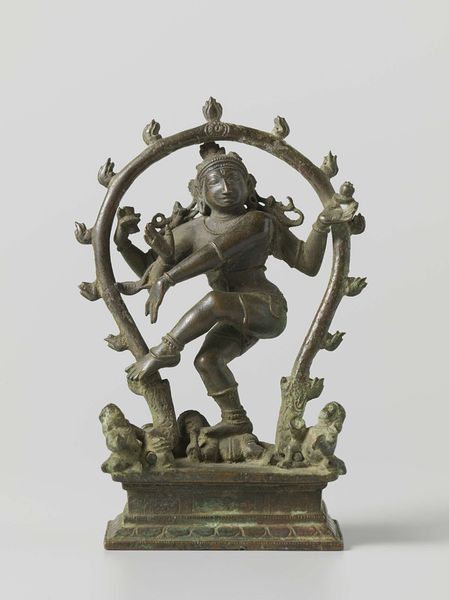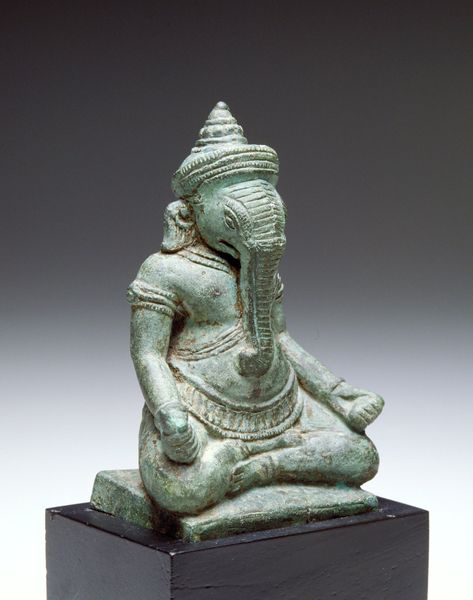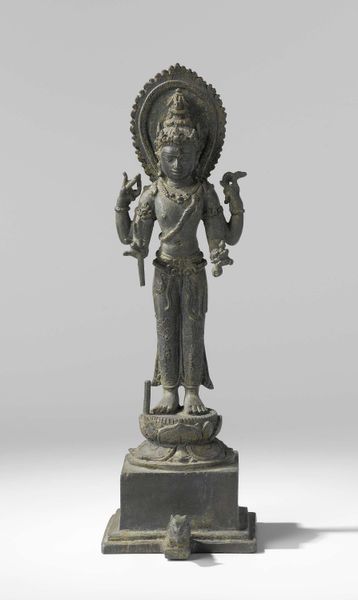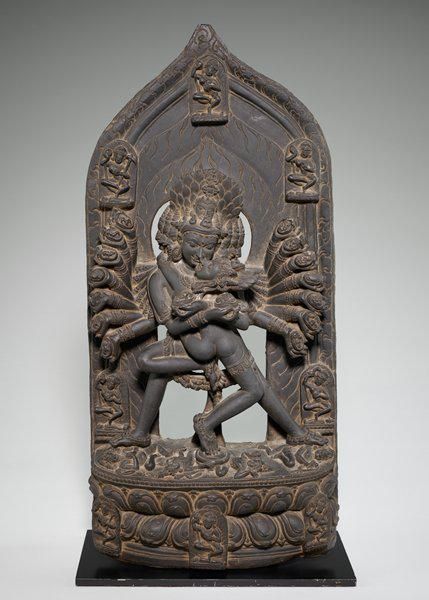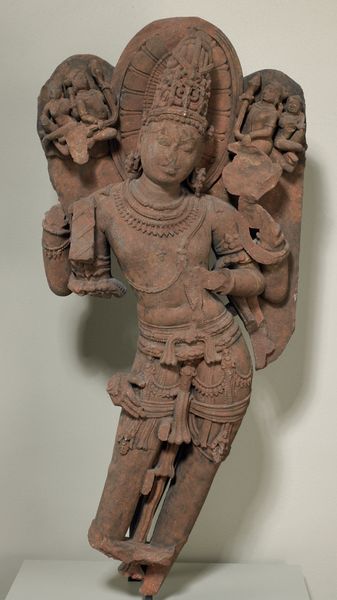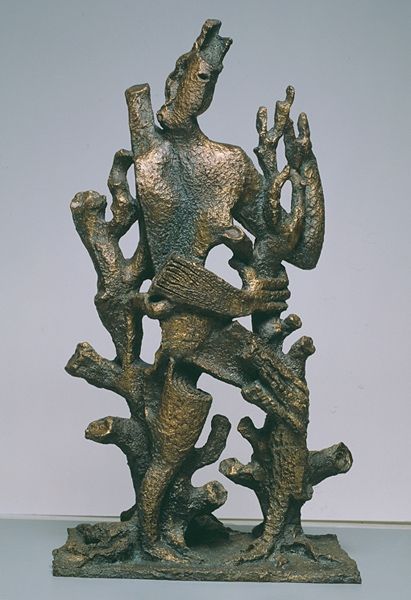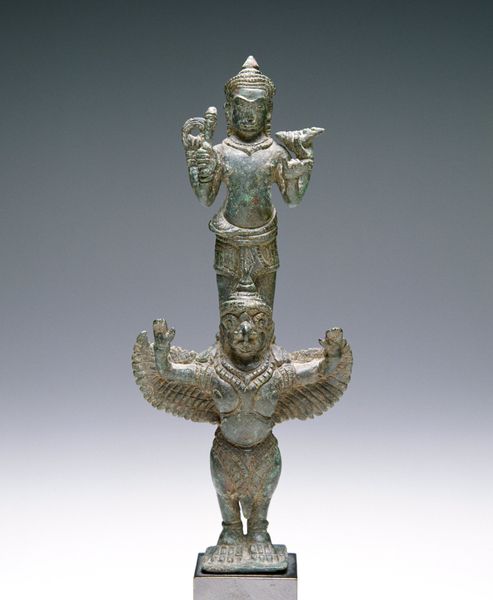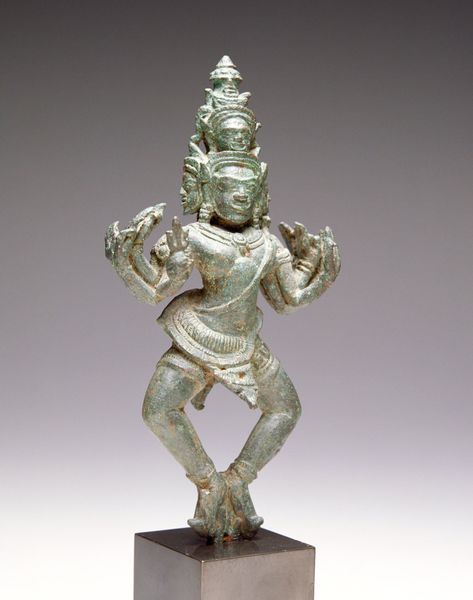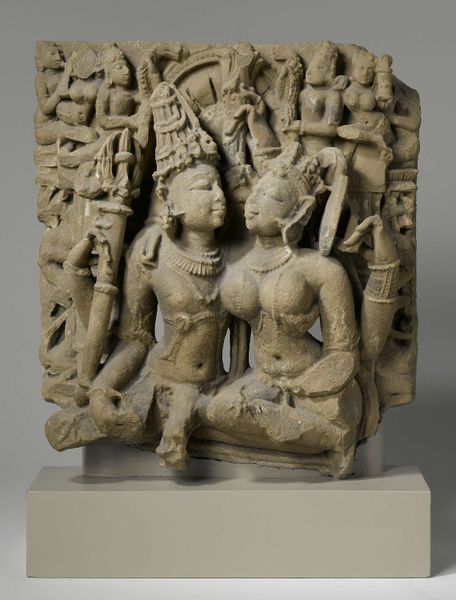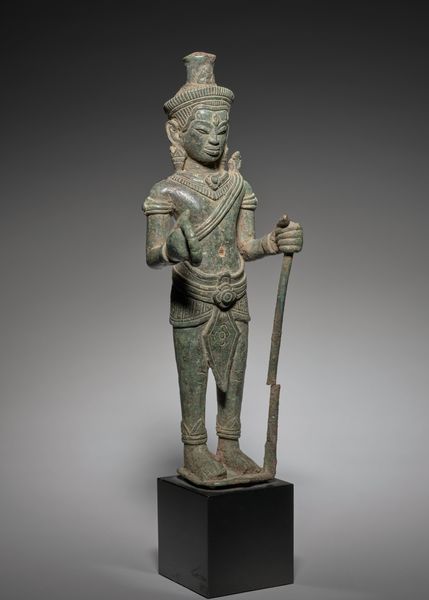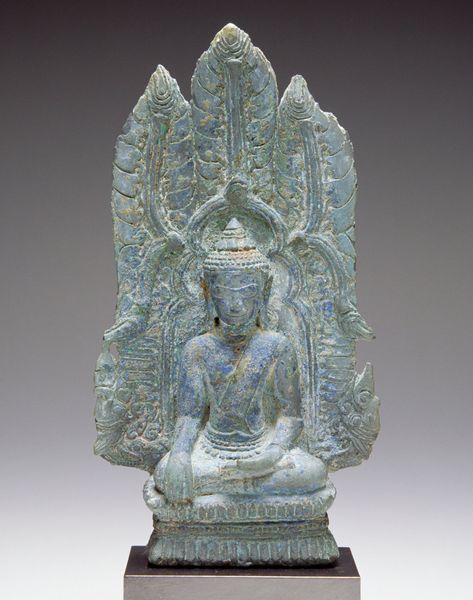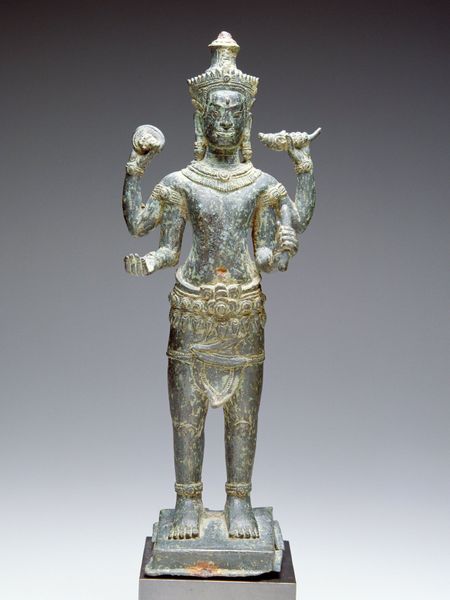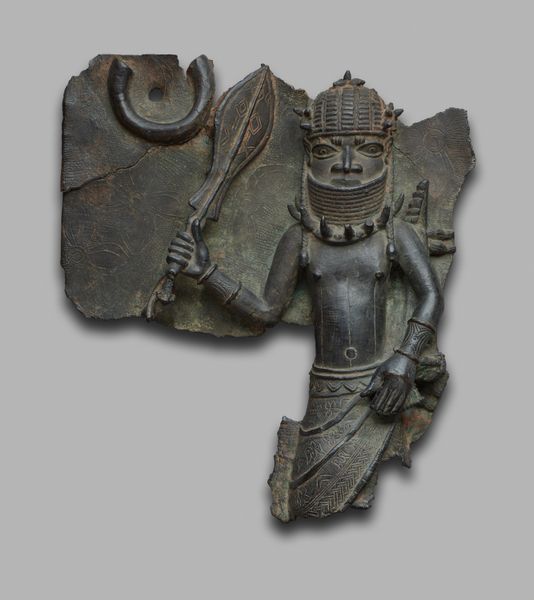
bronze, sculpture
#
medieval
#
sculpture
#
asian-art
#
bronze
#
sculptural image
#
figuration
#
sculpture
#
history-painting
Dimensions: height 40 cm, width 24 cm, depth 10.5 cm
Copyright: Rijks Museum: Open Domain
Editor: Here we have a bronze sculpture titled "Shiva with the Moon in his Hair," dating from around 1000 to 1200. It resides here at the Rijksmuseum. I'm struck by how both powerful and serene this figure seems, despite the clear signs of age on the bronze itself. How do you interpret this work within its historical context? Curator: It's important to recognize that these bronze images of Shiva, particularly those produced in South India during the medieval period, weren't just aesthetic objects. They were active participants in temple rituals and public processions. Think about the socio-political power imbued in these sculptures, seen as intermediaries between the divine and the earthly realms. Where do you see evidence of that potential energy? Editor: Perhaps in the four arms, symbolizing his immense power, or the ring of fire around him, which seems both protective and all-encompassing. The sculpture's presence seems almost to transcend the material bronze it’s made from. Curator: Precisely. The bronze, in its materiality and craftsmanship, wasn’t merely a support for the image, but a testament to the wealth and skill of the Chola dynasty which significantly influenced the public performance of faith. And consider how these bronze images impacted those rituals – they created accessible divine representations, didn’t they, fostering devotion and social cohesion. But it's interesting to consider what we, as modern viewers in a museum setting, might miss or misinterpret from their original usage. Editor: That’s fascinating. It’s easy to get lost in the artistic details and overlook the active role this sculpture played in shaping social and religious life at the time. Now I will view sculptures in this exhibition with that consideration! Curator: Exactly. We tend to remove the "history" aspect when approaching Art. But a sculpture is the reflection of its era in this cultural approach, the museum brings past and present together. It lets the public know its significance in history.
Comments
rijksmuseum about 2 years ago
⋮
The god is making the abhaya mudra, or ‘fear not’ gesture, with his front right hand and the varada mudra, the ‘wish granting’ gesture, with his left. In his raised, rear hands he holds two of his attributes, an axe and a deer. These attributes are found only in images of Shiva from South India.
Join the conversation
Join millions of artists and users on Artera today and experience the ultimate creative platform.
